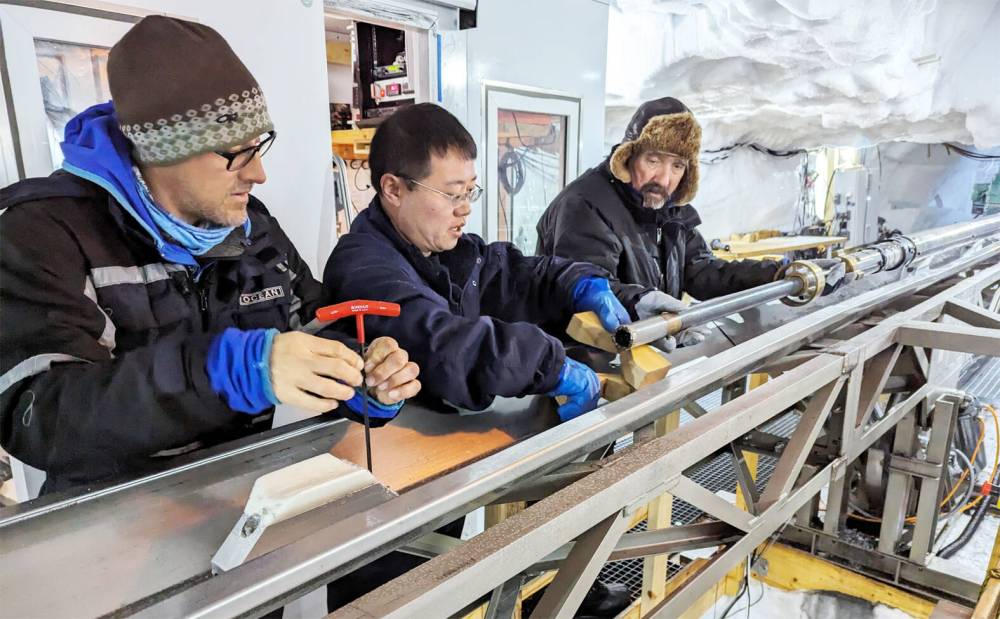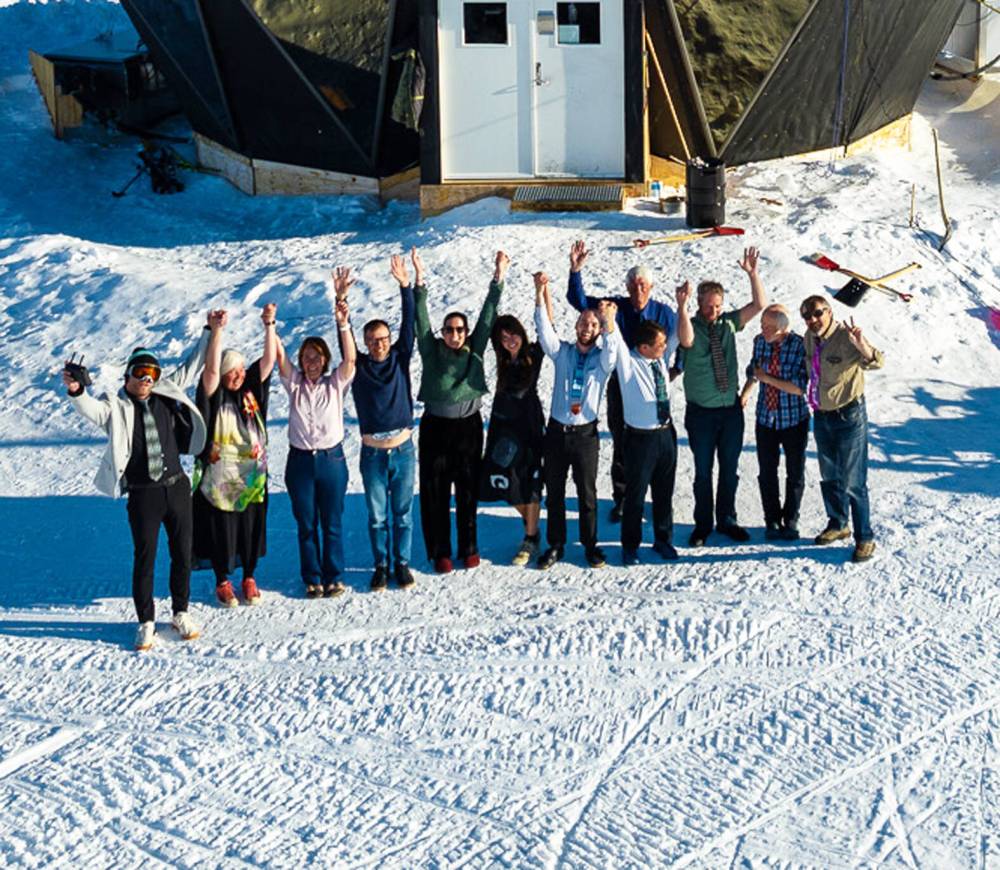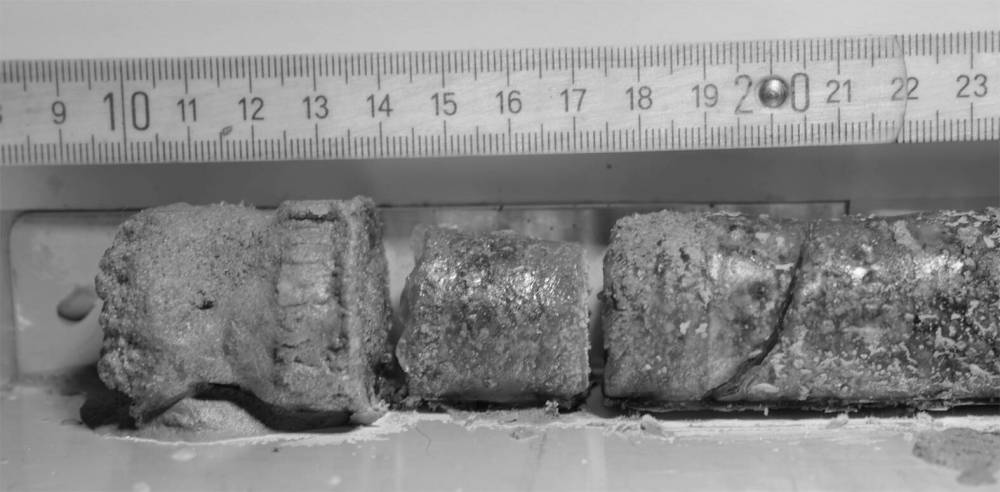U of M scientists involved in major climate-change discovery in Greenland
Advertisement
Read this article for free:
or
Already have an account? Log in here »
To continue reading, please subscribe:
Monthly Digital Subscription
$0 for the first 4 weeks*
- Enjoy unlimited reading on winnipegfreepress.com
- Read the E-Edition, our digital replica newspaper
- Access News Break, our award-winning app
- Play interactive puzzles
*No charge for 4 weeks then price increases to the regular rate of $19.00 plus GST every four weeks. Offer available to new and qualified returning subscribers only. Cancel any time.
Monthly Digital Subscription
$4.75/week*
- Enjoy unlimited reading on winnipegfreepress.com
- Read the E-Edition, our digital replica newspaper
- Access News Break, our award-winning app
- Play interactive puzzles
*Billed as $19 plus GST every four weeks. Cancel any time.
To continue reading, please subscribe:
Add Free Press access to your Brandon Sun subscription for only an additional
$1 for the first 4 weeks*
*Your next subscription payment will increase by $1.00 and you will be charged $16.99 plus GST for four weeks. After four weeks, your payment will increase to $23.99 plus GST every four weeks.
Read unlimited articles for free today:
or
Already have an account? Log in here »
Hey there, time traveller!
This article was published 27/07/2023 (870 days ago), so information in it may no longer be current.
A chilling finding made possible with the help of Manitoba scientists could give climate researchers incredible insight into rising sea levels.
Last Friday, a team of researchers with the East Greenland Ice Core Project hit the bedrock of the Northeast Greenland Ice Stream after drilling through 2,670 metres of ice frozen over 120,000 years.
Dorthe Dahl-Jensen, the Canada Excellence Research Chair in Arctic Ice, Freshwater-Marine Coupling and Climate Change and a professor at both the University of Manitoba and the University of Copenhagen, was on site when the drill touched the bedrock.

DORTHE DAHL-JENSEN PHOTO
The rock drill being mounted on the drill tower. On the picture Trevor Popp, Nan Zheng (Jilin University, China), Steffen Bo Hansen (University of Copenhagen).“We just kept drilling even longer than we expected, then suddenly, we got the bottom of the drill stuck in the mud and couldn’t pull it up,” Dahl-Jensen said.
After a slight panic, the drill was successfully removed from the mud, revealing a fascinating sight.
“It is like a river of ice,” she said, describing the ice stream at the base. “It flows from the centre all out towards the coast, and then the ice is dispatched from the ice stream and iceberg into the ocean.”
The project attracts world-class scientists from 12 countries: Denmark, Canada, the U.S., Germany, Japan, Norway, Switzerland, China, France, the U.K., South Korea and Sweden.
The University of Manitoba is the sole Canadian institution participating in the project.
The first ice cores were drilled on July 21, 2016. After two field sessions were cancelled in 2020 and 2021, the research team continued to gradually drill into the ice. Coincidentally, they ended up drilling the final ice core on the same day they drilled the first seven years prior.
Feiyue Wang, the Canadian Representative of the project’s science steering committee, said the findings confirm their hypothesis that the ice stream is moving rapidly away from the ice sheet.
“Reaching the bottom on its own is a major milestone,” said Wang, the Canada Research Chair and professor at the U of M’s Centre for Earth Observation Science. “They have the evidence to show (that), indeed, the stream is actually moving much faster than the surrounding area.”

MARTIN LEONHARDT PHOTO
Martin Leonhardt (Electronic engineer, Germany), Dorthe Dahl-Jensen (professor and project leader, University of Manitoba and University of Copenhagen), Charlotte Runge (Doctor, DK), Trevor Popp (Scientist, driller, US), Margaret Harlan (PhD student, University of Tasmania), Chiara Barla (Cook, IT), Jonathan Ortved Melcher (student, University of Copenhagen), Sverrir Hilmarson (Diesel mechanic, IS), Nan Zheng (University of Jilin, CN), Derryn Harvie (Engineer, driller, University of Tasmania), Sepp Kipfstuhl (professor, AWI, D), Steffen Bo Hansen (Mechanic, chief driller, University of Copenhagen).It’s an exciting discovery that could come with frightening implications. Now that researchers know the ice is melting from the base, they are more certain about the root and extent of rising sea levels.
“When the ice is melting from the base like it is in the ice stream, then you produce this air force that allows the ice to slide very fast out towards the margins, and thus it increases the amount of mass loss and sea-level rise,” Dahl-Jensen explained.
“When Greenland ice is melting, you know that the Antarctic ice sheet is also melting, and that could raise the global sea level by up to nine metres,” Wang said.
Young, trainee scientists made up about 40 per cent of the research field team. Wang, who sent his PhD student and technician to work on the project, said it’s imperative that young talent are given opportunities in the field of climate science early on.
Before being hit with cuts about a decade ago, Wang said glaciology — the scientific study of snow and ice — was thriving in Canada. Thanks to Dahl-Jensen’s leadership, he believes the field is making a comeback.
“She not only brings her expertise to Canada but she’s been very active in rebuilding the Canadian glaciologist community, Wang said.
While this chapter of the project is coming to a close, another ice cap project led by Dahl-Jensen — this time, in Nunavut’s Axel Heidberg Island — is on deck. Unlike the Greenland project, Dahl-Jensen plans to recruit scholars from a swath of universities across the country.

SEPP KIPFSTUHL PHOTO
Image of the last core with mud.“We expect to drill an ice core there that’s 700 metres deep next summer,” Dahl-Jensen said. “It’s been my mission, since I came to Canada, to try to make a project that involves climate and ice researchers from the whole of Canada.”
With the ability to make more accurate predictions about ice patterns and rising sea levels, she said the project’s findings will benefit nearby residents fearing climate displacement and researchers around the world.
“It’s difficult to predict what to do when the uncertainty is so big. What we’re doing by learning how the ice stream is flowing is making the predictions more reliable, with less uncertainty,” Dahl-Jensen said. “I think that will be really important for everyone who’s living close to the ocean.”
cierra.bettens@freepress.mb.ca



